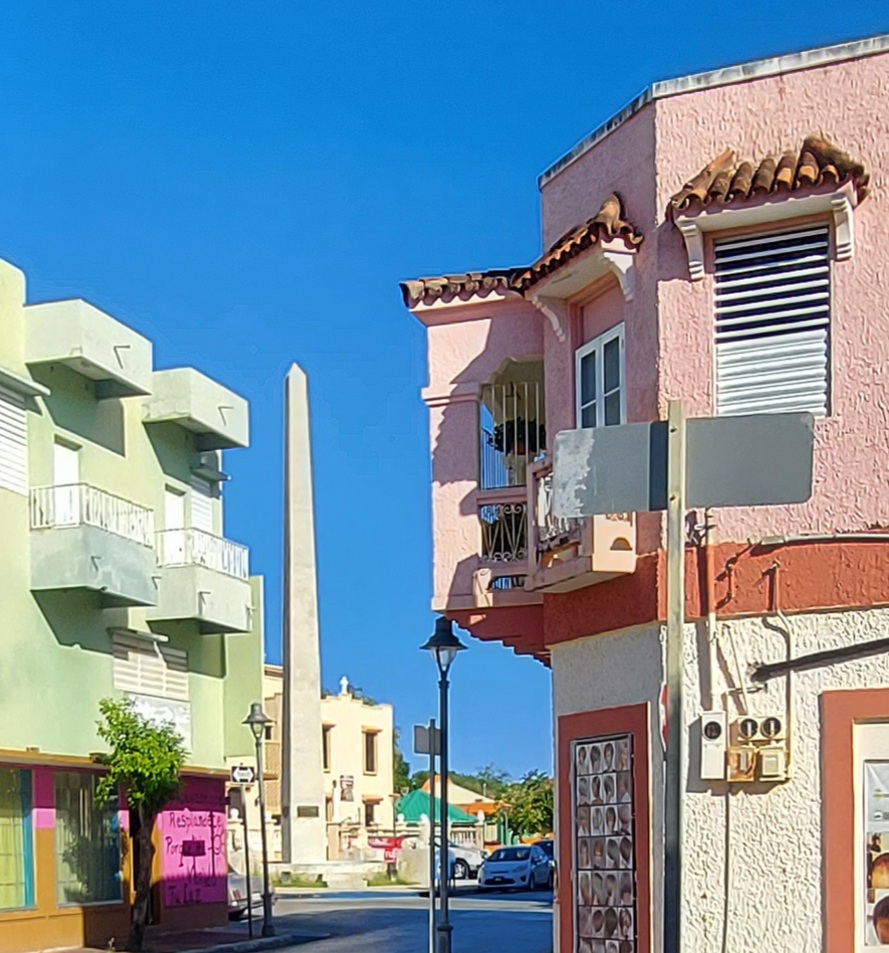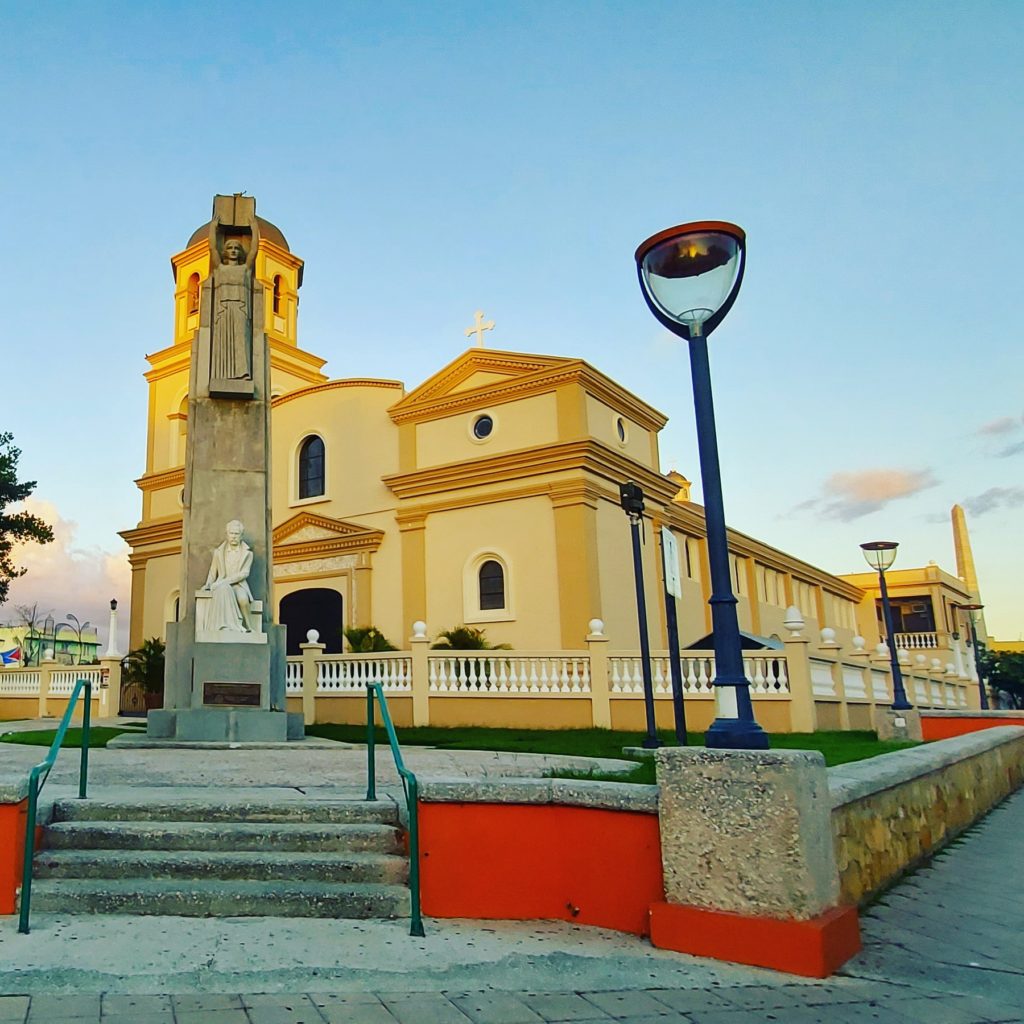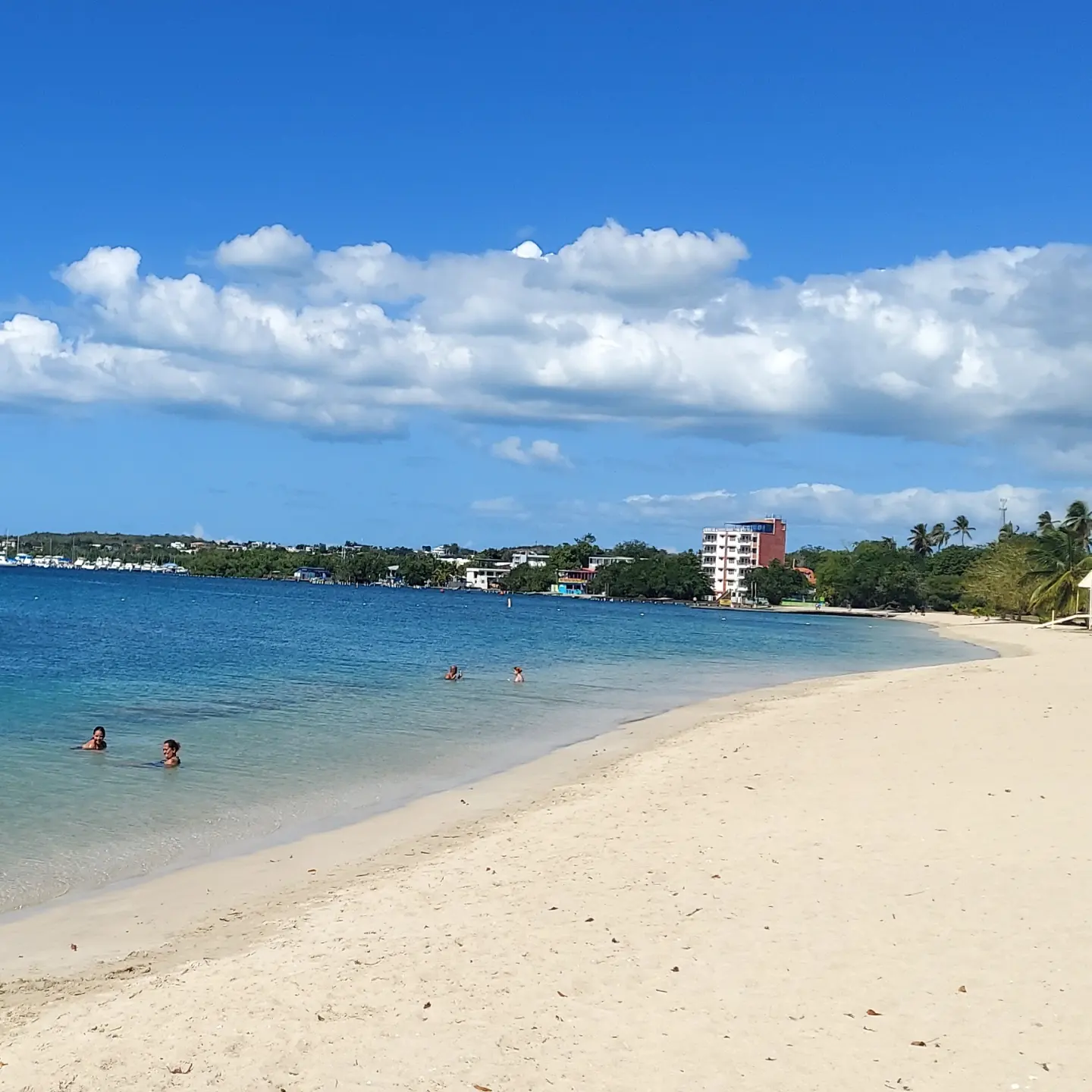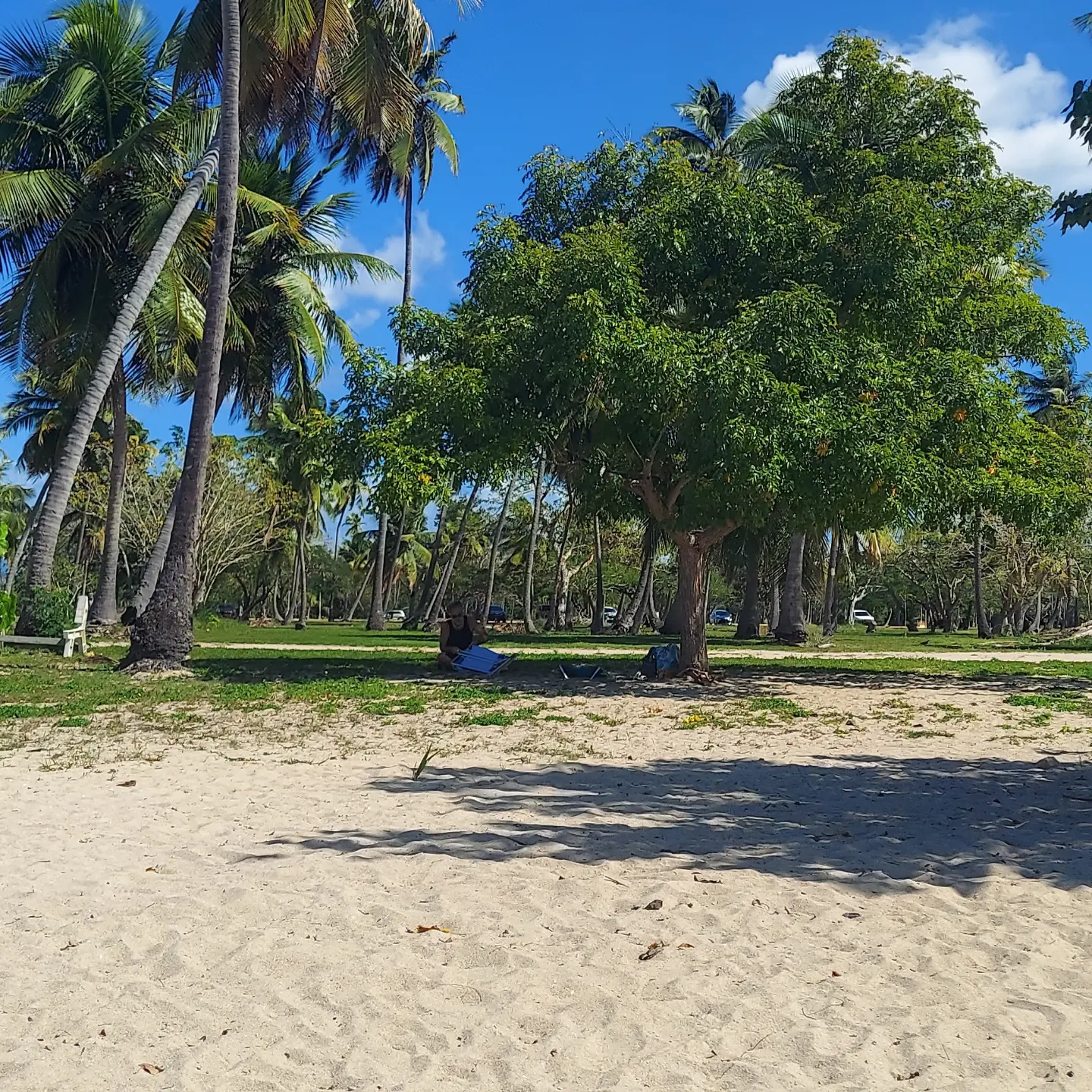Crashboat Beach has something for everyone — a gentle surf that beckons children in donut floats as much as adults drinking piña coladas, shady areas for relaxing, warm sand for sunbathing, a fascinating old pier jutting out into the water that teens love to jump off, food trucks with pinchos (kebabs) and smoothies, and amazing sunset views. But what Lisa found most interesting was UNDER the water!
Trouble in Paradise: A Series
Part 1: Transportation
Traveling in retirement is not all sweetness and light, despite what Messy Suitcase’s social media might suggest. We post photos from beautiful beaches and interesting places, but usually don’t share the logistics of how we got there. Or how we ran from the beach to the car because of a sudden unexpected downpour. Or about the fact that I am currently nursing a broken rib from tripping on a root and falling during a hike. There are plenty of obstacles and inconveniences to our traveling retirement that we grapple with daily, just like there were when we still worked.
We decided it was time to share a few, to give our lifestyle some balance, in this new series, Trouble in Paradise. In Part 1, we focus on transportation.
Flying
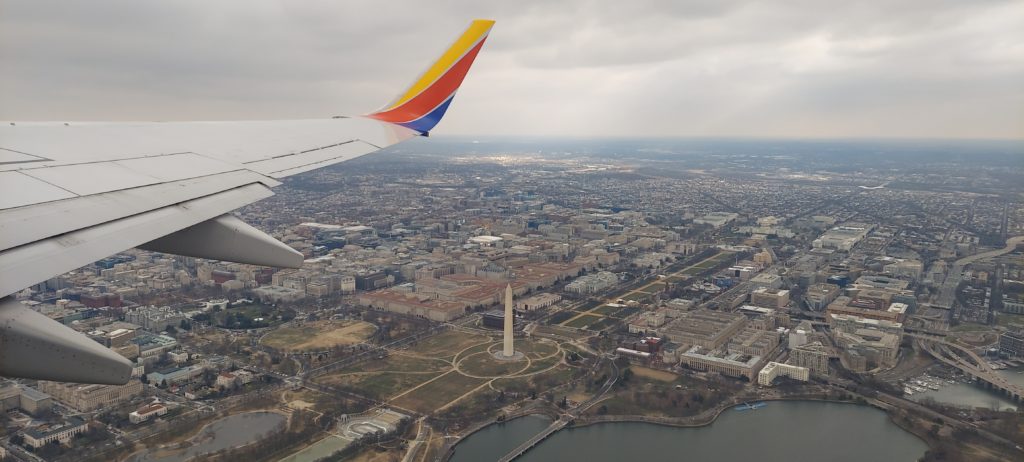
Air transportation is an unavoidable hassle if you’re going to live a traveling life. As soon as we arrive in a place, we have to start planning how and when we are going to get to the next one. We fly almost exclusively on Southwest Airlines right now, because we have thousands of airline miles and a Companion Pass good through the end of 2022. This helps keep our retirement life affordable. But it’s not always convenient, especially in the time of COVID.
For example, in January we booked a flight back to the United States from Puerto Rico for May 3, 2022. Last week, Southwest changed it so egregiously that the second leg was the day before the first, a physical impossibility. It took hours to fix this, including long telephone wait times, until they finally fixed the glitchy website so we could change the flight online. Then, two days later, they changed the flight again! We were originally going to arrive in DC at 8 PM. At this point, it’s 10:15 PM. I can’t wait to see what happens next (she said sarcastically).
Traveling during COVID times means securing the right kind of COVID-19 tests (as specified by the airline or the government of the place you’re entering), getting them administered correctly, with results returned in the specified time frame, filling out all airline COVID forms, making sure we have the safest masks to protect us, and choosing seats near the back of the plane (the safest part).
Packing
Fitting everything you need for three or four months of life into your luggage is difficult as well, especially if your lifestyle includes snorkeling and other athletic pursuits. Alas, my bike doesn’t fit in my suitcase, but I pack bike shorts and a helmet for when I am able to rent a bike. My tennis shoes fit, and just one tennis outfit, but I have to rent a racket at the club where I play. And speaking of shoes, while I am no Carrie Bradshaw, I cannot travel for months on end without all of my favorite Aetrex sandals! As well as running shoes. And hiking shoes. And Keens for the beach. It adds up.
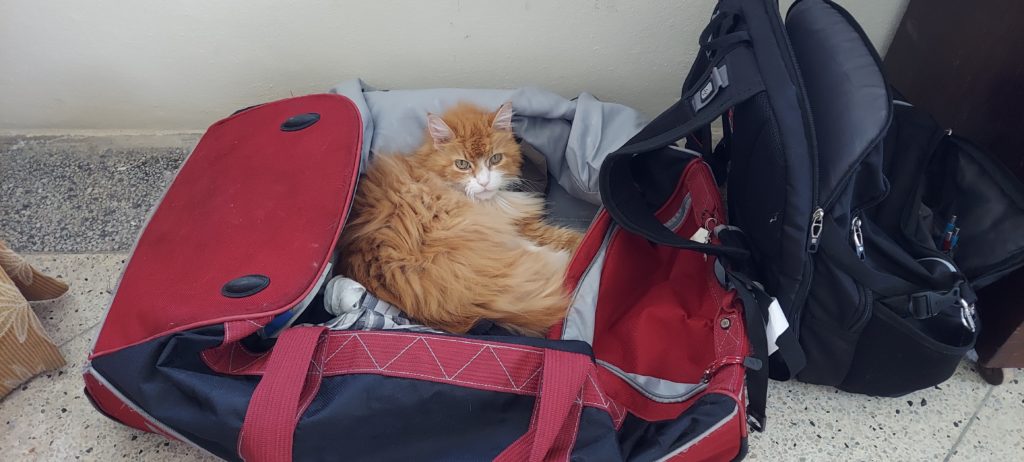
And then there’s the TRX home workout equipment, and a yoga mat, for staying strong and flexible, even while on the road. There’s snorkel gear. There’s the cat’s stuff, toys and litter box, bowls, and food. There’s jewelry. And my computer and tablet. And chargers. Sweaters and pants for cool evenings. bathing suits and goggles. Vitamins and medication. Toiletries. A hair drier.
I think you get the picture. We pack as light as possible, but it’s still a lot of stuff.
Getting Around
When we were living in Mexico, we drove our covered Toyota Tacoma down from the United States, after retrofitting the back latches of the cap to secure our possessions. We would then park where we were living, and rely as much as possible on public transit or Uber.
Public transit can really simplify life, but first, it complicates it, because you have to learn how it works in every city. How much does a ride cost? Bus or subway? Do you get a ticket? Pay cash? Exact change? A Metrocard? An app on your phone? Where are the stops or stations? What are the hours? What about transfers? Safety? How do you get from Point A to Point B? There’s a trip planning app called Moovit that really helps with this. Google Maps also helps chart a public transit route.
Uber is another great resource – better than cabs, in our opinion, because it’s more secure, and you know before the car arrives what it will cost to take you to your destination, and many drivers are happy to share their recommendations for restaurants, neighborhoods to visit and local experiences.
But we often need to rent a car. It’s a huge expense, and finding one that doesn’t break the bank when you are staying for months at a time is really hard. Last year, we found a deal on Enterprise after searching for weeks. Then, when we arrived in Puerto Rico, they told us we would have to bring the car back to San Juan International Airport every month to renew it. Since we were traveling to the east end of the island, that was a huge inconvenience. So on the renewal day, we spent an afternoon searching for an Enterprise local to our lodging, had that worker call San Juan, and got the car extended – we hoped.
A couple of weeks later, we found a $150 ticket on the car for expired registration. They had given us a car for three months without making sure the registration would last the duration! Bob got pulled over again the following week for the same issue, but was able to talk his way out of a ticket. We spent the last few weeks dodging police traffic stops so that we wouldn’t get another ticket. We got Enterprise to cover the cost of the ticket, in the end, though I thought they might blame us because we had not brought the car to San Juan in person after a month as instructed.
Damage and Destruction
We took that first car, a Ford Focus I believe, on a rutted dirt road to a deserted beach and managed to loosen the front left quarter panel, then spent the next two months pushing it back in place daily. The car was a very low rider, and every bump in the road scraped that damned quarter panel. (We noticed that most cars had the same problem; roads in Puerto Rico can be very bad.) In the end, there was an insurance claim on the car, which was covered by a combination of our USAA Auto Insurance and the coverage provided by American Express. Still, a hassle!
We are currently renting from Avis at a low(ish) rate I secured through Priceline. The first car they gave us had a nonworking cigarette lighter, which we needed to power our GPS. (We had discovered there are dead spots in the mountains and will no longer travel without the GPS. See Packing for why this is an inconvenient solution.) We took the car back immediately and got upgraded to the only other car on the lot, a Hyundai Tucson SUV, which is actually way better for Puerto Rican driving.
But … five weeks into our stay this time, Bob looked at the front wheel and saw this:
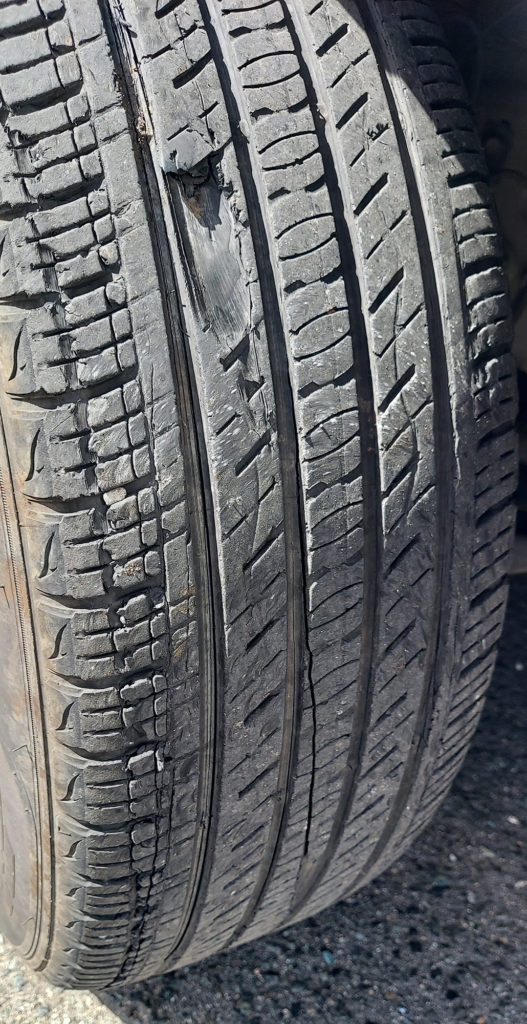
Holy shit! We were driving on a grossly defective tire that looked like it could explode catastrophically at any time! We called Avis Roadside Assistance in Puerto Rico. Busy signal. FOR TWO DAYS. We called the local Avis, at Aguadilla Airport, 20 minutes away. Non-stop ringing, or busy signal. FOR TWO DAYS. We called Avis in the United States. They connected us to US Roadside Assistance, who told us to call PR Roadside Assistance. I sent an email to Avis. They apologized for any inconvenience – four days later – told us to call PR Roadside Assistance. I lost all my hair pulling it out in frustration.
In the end, we just drove to the damned airport, where of course, the solitary Avis employee was not coming in for another hour. We went out to lunch, returned, and a miracle happened. The man at the desk made a phone call, gave us instructions to a gomera (tire place), and the tire was changed before we had time to finish piña coladas at a bar down the road.
Speaking of Tickets
We found a ticket on our car again last week when we returned to it after a day at the beach. I knew the registration wasn’t expired – it was the first thing I had checked. Puerto Rican traffic tickets are almost impossible to decipher, but I finally figured out that we had parked facing the wrong direction, and had to pay $50. It would be knocked down to $35 if we paid within 2 weeks.

But how to pay? There was no website, no address to mail. Off to Mr. Google! I found guidance here – and learned that you have to pay in person – isn’t this 2022, people? – at a place called CESCO (the Motor Vehicles Department). There’s a CESCO Office near the Avis place in Aguadilla, so we went there after getting our new tire. The CESCO person sent us to another office, Hacienda (Finance department), at the other end of the same strip mall, where we joined a socially-distanced outdoor line of people holding boletos (tickets).
While Bob waited, I bought breakfast pastries at the bakery next store, and on the way back noticed a barcode on the Hacienda door that would have allowed us to schedule our appointment in advance and not wait in line. It would have been nice to know about that! But we were there already, in line, and hoped we were close enough to the front to get in before the office closed for the day at 3:30 PM (although the website said it closed at 5.) We were fortunate to be the last people allowed in! And both the door monitor and the woman behind the desk (one of only two people working inside) were extremely helpful friendly and spoke English. The woman did warn us to make sure we provided the car rental agency with evidence this ticket was paid so they wouldn’t try to charge us for it again.
Meanwhile, Back in the States
Since we flew to PR from Washington National Airport, our Toyota Tacoma is parked in an underground garage in Crystal City, VA, for what I considered a very reasonable monthly rate of $130. I did a lot of research to find this low rate at this convenient location. Imagine my surprise when I received an email from SpotHero last month, two weeks after I parked the car there, telling me the rate was going up to $200 – a 50% increase – beginning the very next month! Obviously, there is no way to move this car out of the garage until we return. We just have to suck it up. And though I wrote a scathing email to SpotHero, I received no response and have no recourse but to pay until we take the car out on May 4.
Up next …
Following a Sea Turtle in Rincón
We had a magical snorkeling experience in Rincon, where we encountered a huge abundance of healthy sea coral, aquatic life, and even a couple of hawksbill turtles!
Dueling Piña Coladas in San Juan
Caribar, the beautiful bar inside the Caribe Hilton in San Juan, boasts that bartender Ramon ‘Monchito’ Perez invented the piña colada there in 1954.
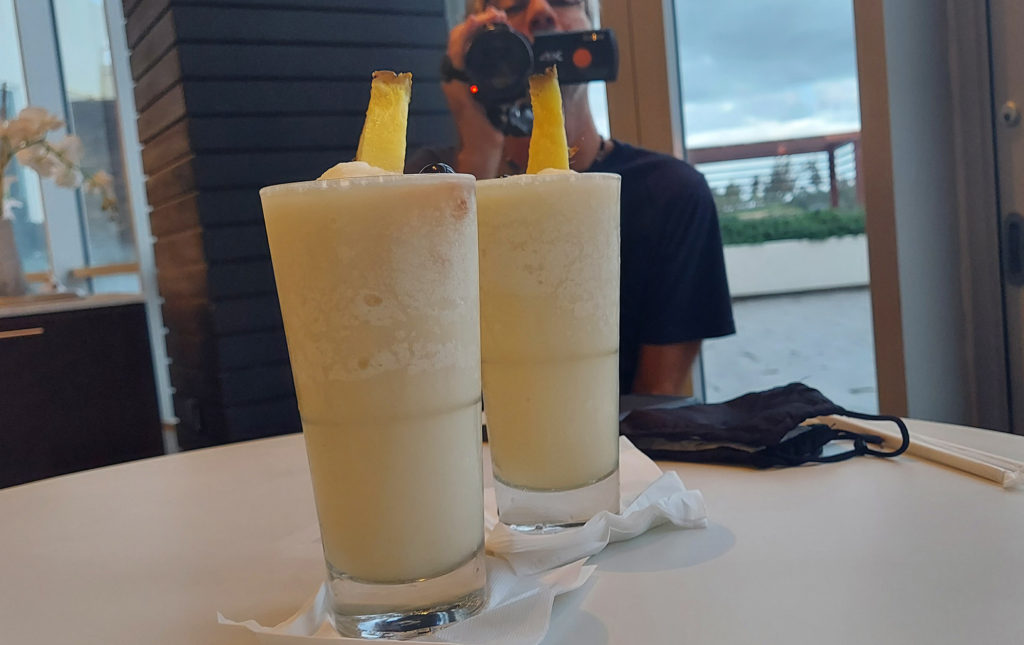
No, wait, that’s Barrachina a Spanish restaurant in Old San Juan, where traditional Spanish bartender Don Ramon Portas Mingot created the original recipe in 1963.
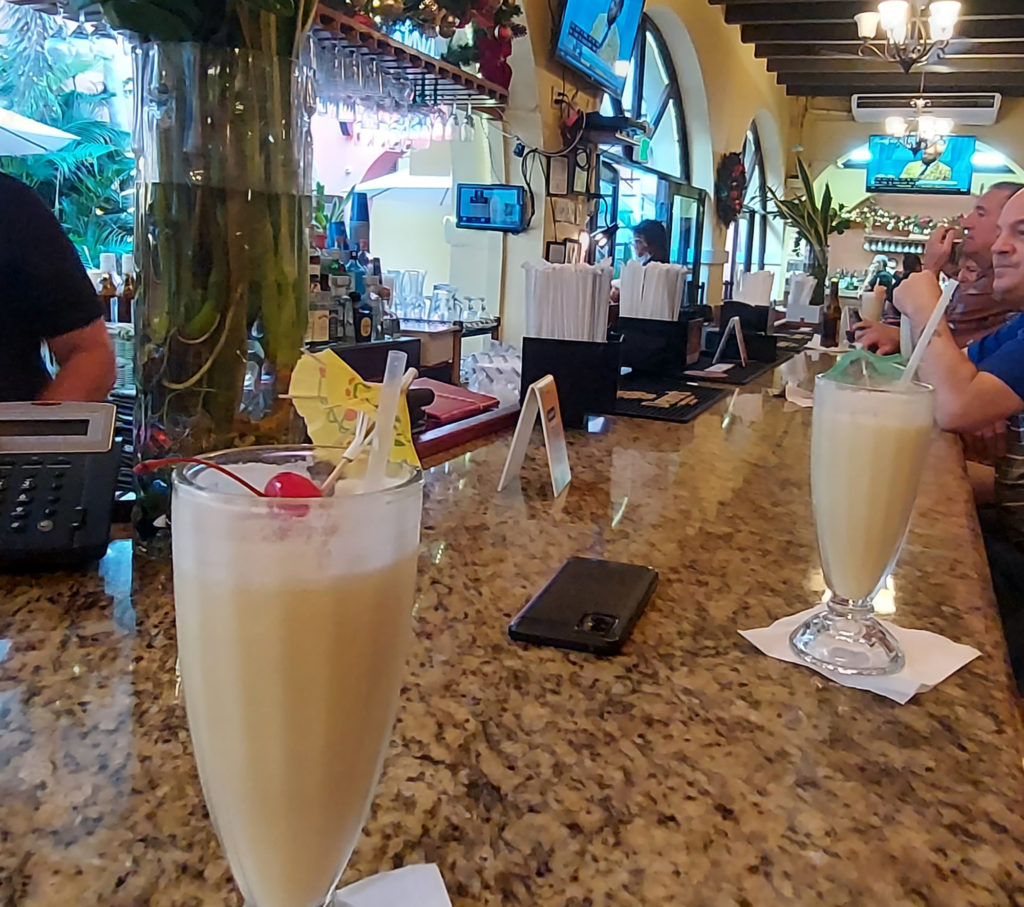
Neither side is backing down. Which bar is the birthplace of Puerto Rico’s iconic drink? That may never be settled. So in our opinion, the real question is, which bar makes the best piña colada?
And can either version approach the deliciousness of Lisa’s piña colada recipe? Bob gives them the taste test! Enjoy the video:
Caribar‘s address is Calle Los Rosales, San Juan, on the lowest level of the Caribe Hilton Hotel.
Barrachina is located at 104 C. de la Fortaleza, Old San Juan.
THANK YOU!
We have passed 100 subscribers on YouTube. THANK YOU!!!

That means we were able to claim our official Messy Suitcase URL: youtube.com/c/messysuitcase
Thanks for subscribing. Share the joy!
Why Do I Love Kayaking?
Why do I love kayaking? It’s hard to explain, but today’s excursion on the Caribbean Sea really has me thinking about it. Let me try to explain.
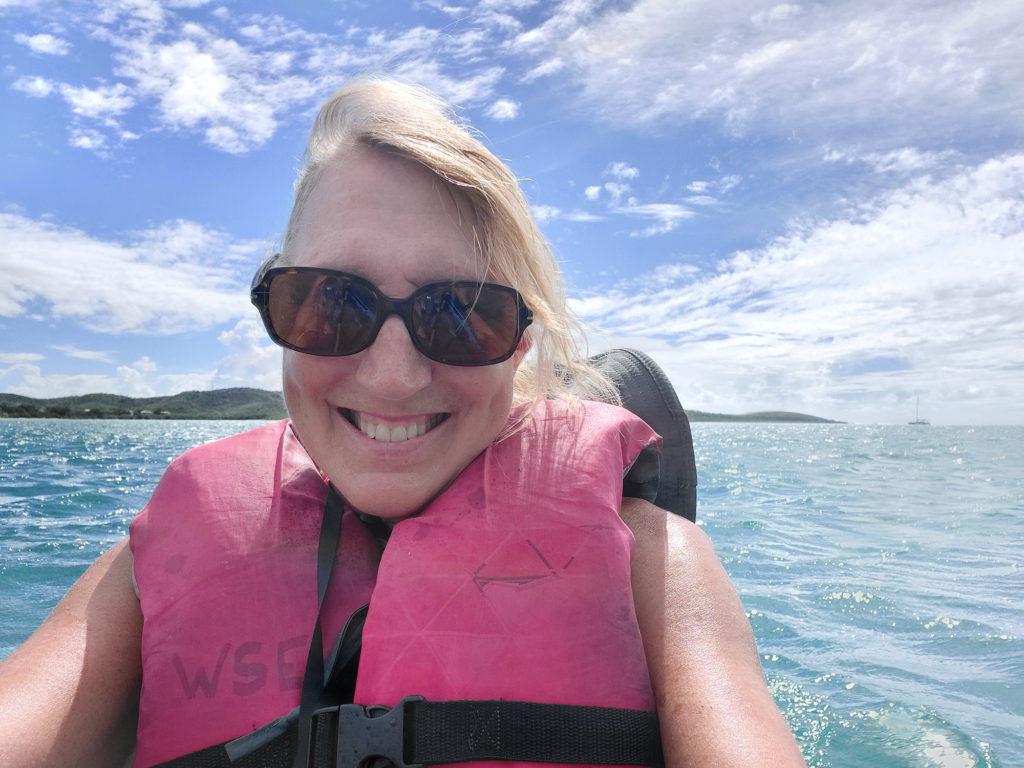
Kayaking in Vermont
I have spent the past two summers on Lake Rescue in Vermont, where I spent hours paddling around that 200-acre body of water in the Green Mountains. Nowhere do I feel more at home than tucked into my little orange boat, floating in the middle of Lake Rescue.
But that watery home was always changing, a metaphor for life, I guess. Sometimes I would slip out of bed at 6 AM and waft my boat into the early morning fog, beckoned by the haunting calls of the loons. Sometimes I would escape my family (this was the pandemic, after all) for some quiet time to myself after dinner, and watch the bald eagle father interact with his child as the sun set over the lake.
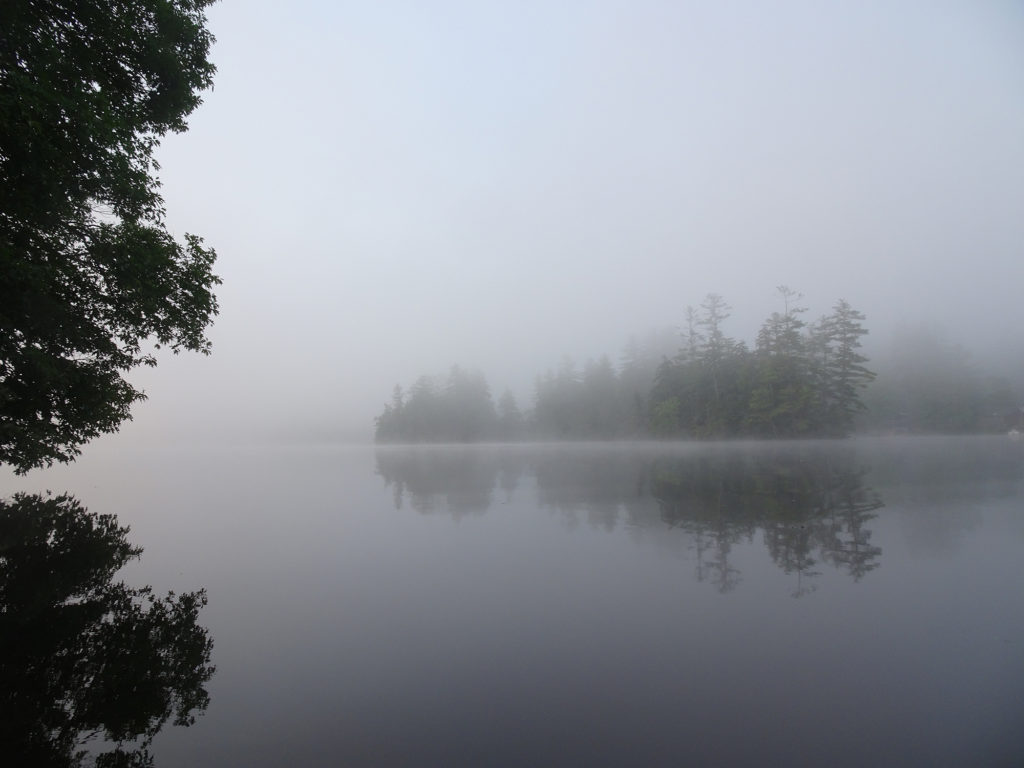
Sometimes I would kayak fiercely down to the Red Bridge at the far end of the lake, only to see a storm coming in that would soak me as I fought the winds to get home.
On weekend afternoons in summer, I would soak up the energy of my neighbors as some people water skied, another set up a lemonade stand on the family dock, kids dove off platforms out on the water, and a giant inflatable pink pelican bobbed up and down.
Come fall, the people would leave, and Lake Rescue would become a place of peace and solitude. Most of the local birds would leave, but then visiting ones would arrive, stopping for a few days here and there on their way south, sometimes providing a thrilling show.
Kayaking in the Caribbean Sea
Kayaking in Puerto Rico is a completely different animal. We’re currently living in the southwest corner of the island, and the Caribbean Sea is an impossibly glorious shade of turquoise, or deep blue, or aquamarine, depending on the angle of the sun and the invisible organisms living in the water. The sea itself is a living being, breathing in and out onto the shore. Its waves can welcome your boat and gently accompany you on your ride, or they can toss you around, throw up obstacles, and remind you that you are a tiny speck on a huge ocean.

Kayak out a ways from shore and the world looks different. The palm trees wave from a distance. The sky becomes huge. Sometimes it grows angry, and besets you with torrents of water. It slaps you and resists you and makes you feel small and powerless.
Sometimes it teases you with beautiful weather, only to reveal its true nature when you’re far from shore and see the black clouds moving in, the ones that were hidden from view when your feet were on land. The waves grow restless. The thunder rumbles. The surging water decides which way you will go. White seabirds glow as they soar above you, reflecting the sun to your right, a stark contrast to the black clouds to the left.

The views are spectacular. Sailboats pose in front of black skies like supermodels strutting down a runway. You want to take pictures, but the sea takes your boat where it wants while you are focusing and shooting. You wrest control back from the sea as best you can — you, an insignificant mortal, vs. the sea, the turquoise lifeblood of the planet.

A rogue wave hits you. You are covered with water. It’s all over you; it’s around you; it’s under you. You are soaked. The sea is still restless. The strong wind pushes your hat off. You are glad you don’t have shoes; your bare feet are connected to the plastic boat. You keep paddling. You are soaked but still upright. You feel invigorated. You lean back in your seat, put your feet up, stop paddling, just experience the moment. Out in the middle of the sea. Water all around you. Sun above; storm approaching. You are part of the ocean. You are inside the water. You are physically connected to the planet.

One paddle, two blades. Dip left, dip right, left, right, one fluid movement. Get a rhythm and fly across the water. Or not.
This is why I love kayaking.
Guanica Dry Forest: Cacti, Cliffs and Red-Billed Oystercatchers
Who would expect to see so many kinds of cacti on a tropical island? We were intrigued to view the turquoise waters of the Caribbean Sea from a desert trail in Guánica State Forest, on the southwest end of Puerto Rico.
A United Nations International Biosphere Reserve, the Guánica State Forest, also known as Guánica dry Fores , is one of the most extensive tropical dry coastal forests in the world, totaling around 9,000 acres. It’s a paradise for birdwatchers, and we saw many. Read all about it.
Enjoy Bob’s video of our 3.7-mile hike along the rocky coast and through the desert.
Our day spent hiking and beaching also presented us with captivating flora and fauna! Lisa took a few pictures of her favorites, especially the red-billed oystercatchers. She guessed the name after watching them in action!


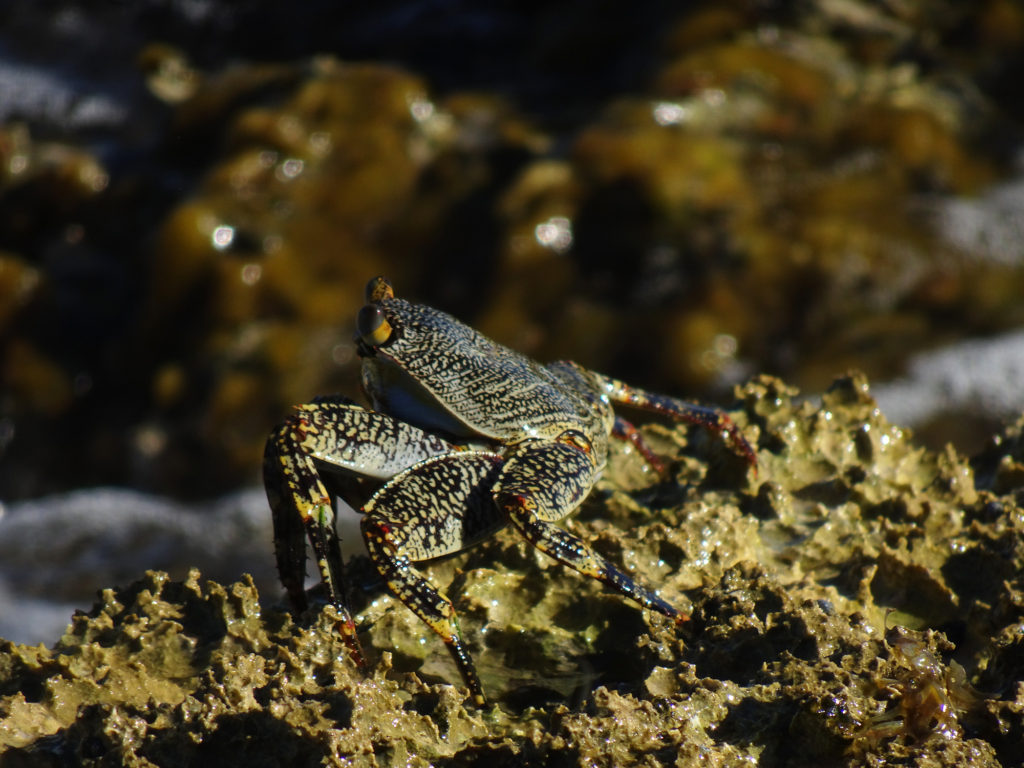
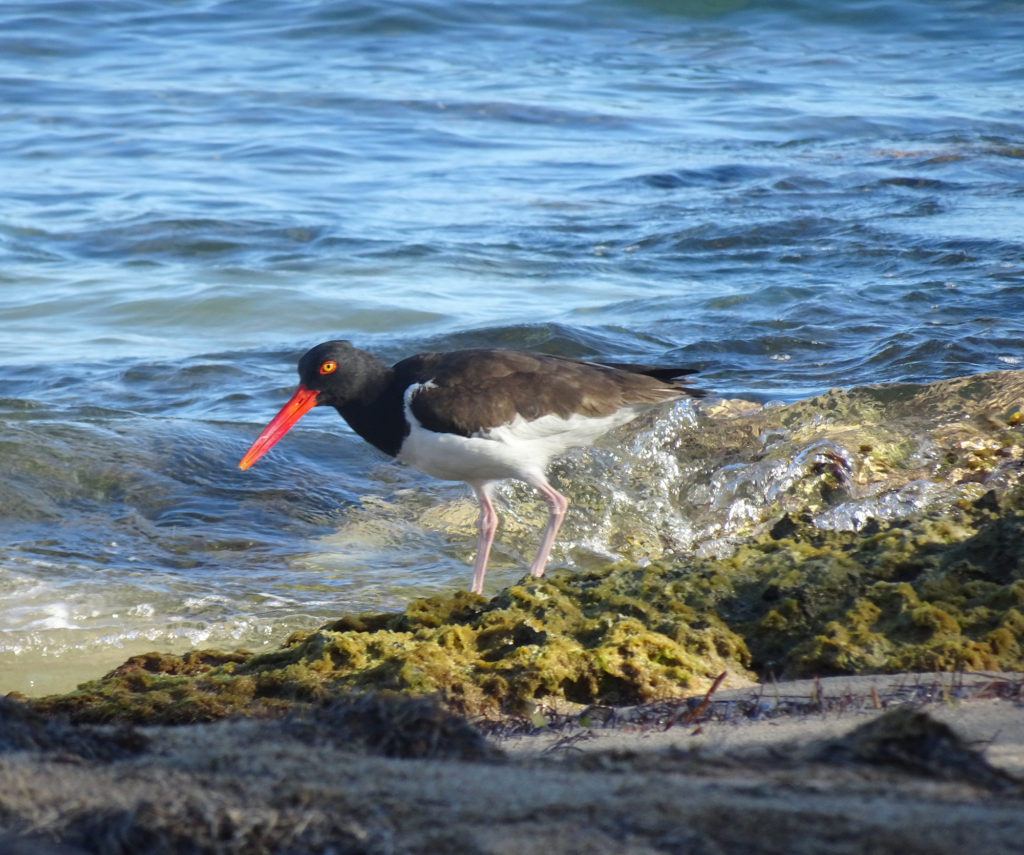
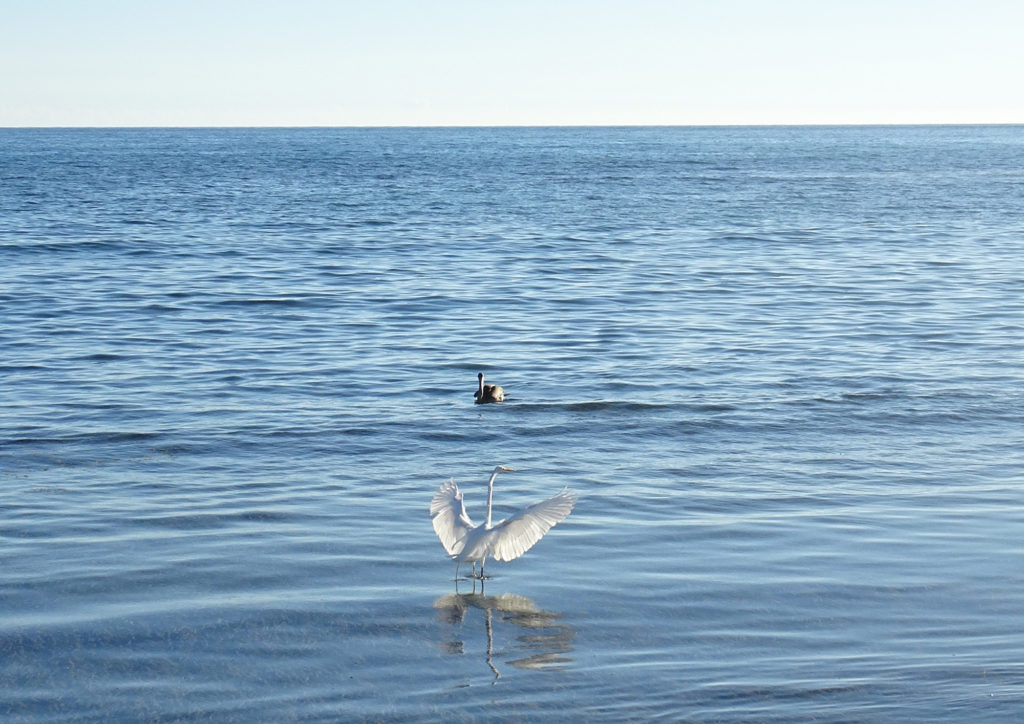
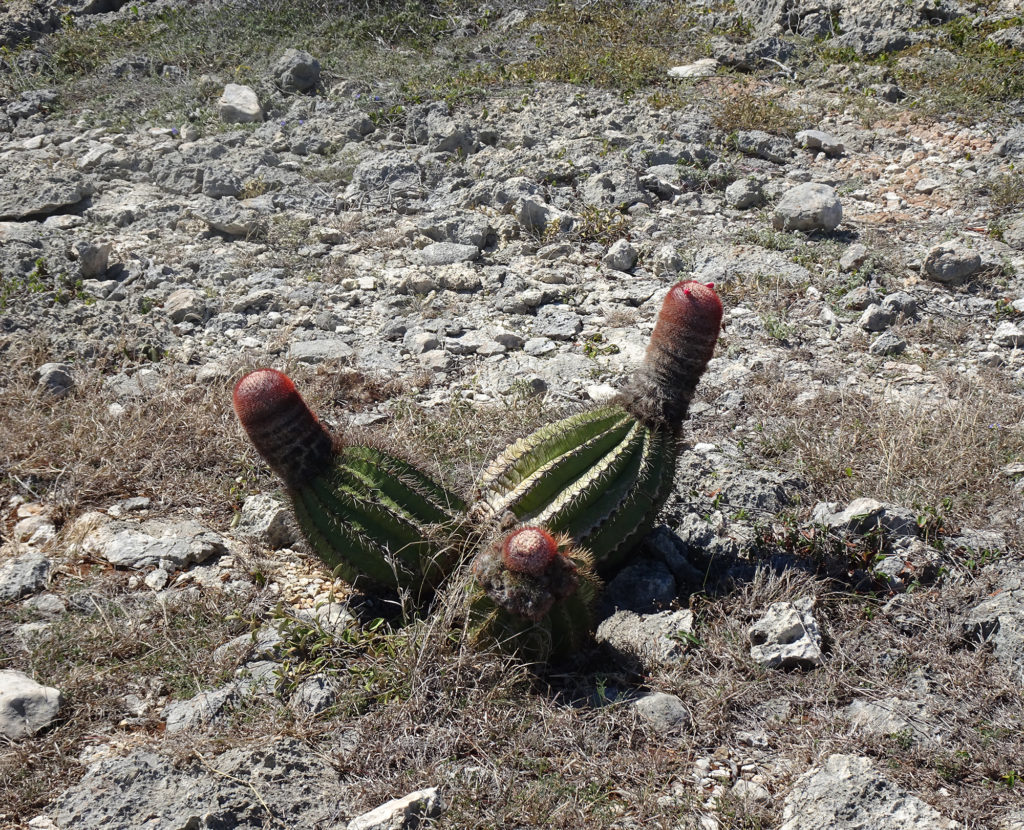
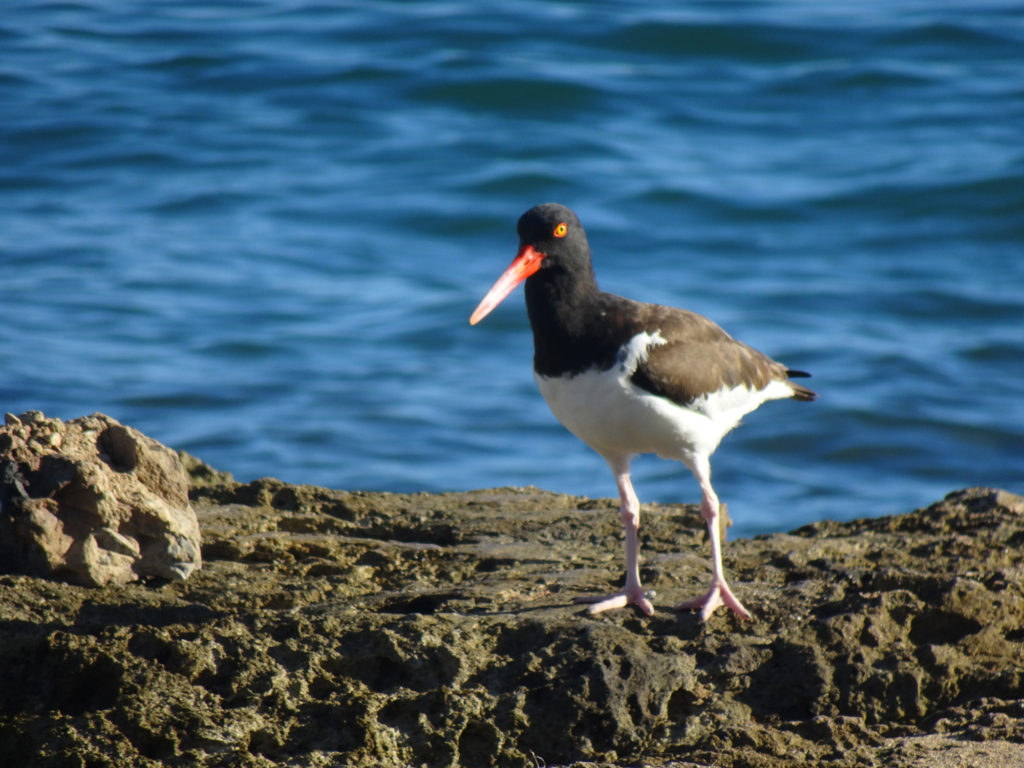
Cabo Rojo Lighthouse Hike
A hike in the nature reserve around the Cabo Rojo Lighthouse (Los Morrillos) served us up spectacular vistas, with stomach-dropping white and red cliffs, fascinating rock formations, crystal-clear Caribbean Sea, and even cacti!
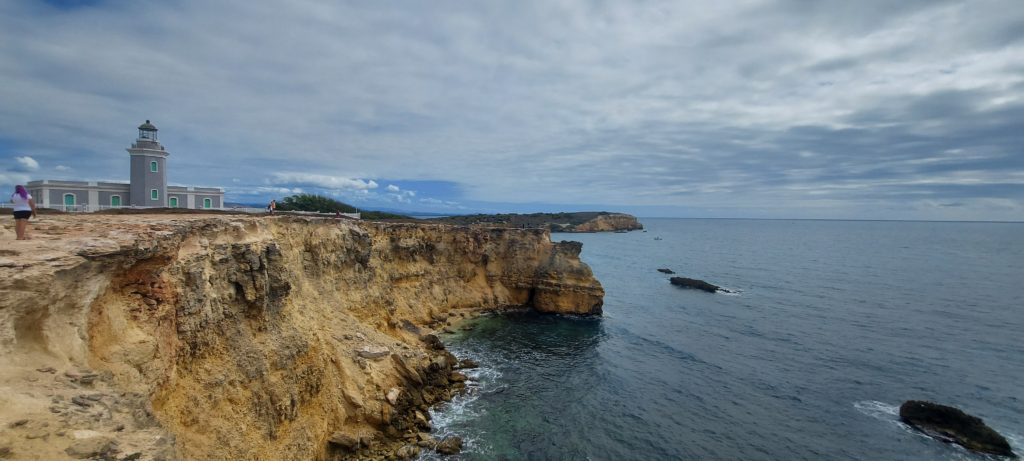
We found the loop trail, part of the Cabo Rojo National Wildlife Refuge, on the All Trails app. It took us around the rocky coastline of this peninsula, then past the salt flats, before dumping us out on Playa Sucia, or La Playela, a gorgeous beach.
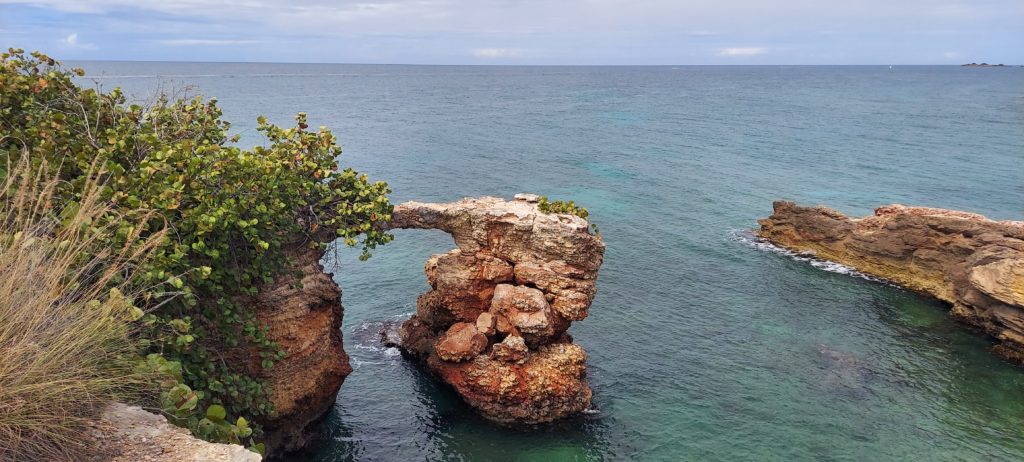
It’s located on the southeastern point of Cabo Rojo, on the Morrillos Peninsula, in the southwest corner of Puerto Rico. Learn all about this destination at the Discover Puerto Rico website.








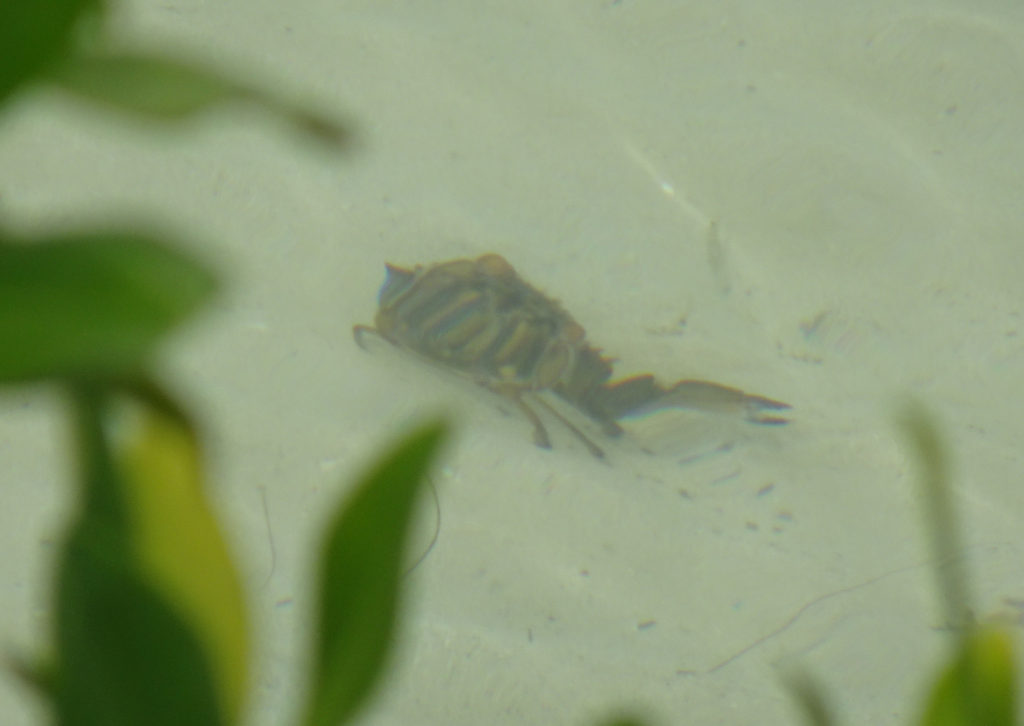
Make sure you come between 9 AM and 5 PM, because the park rangers lock the gate!
Check out Bob’s YouTube video!
Mixology Class at Casa Bacardi – Join the Party!
Our tour guide and mixology master Joisa made learning to mix mojitos and piña coladas at the Bacardí rum factory a party! Did you know that piña coladas originated in Puerto Rico? Pour yourself a glass of rum and join us for the class!
Back to Puerto Rico!
After a month in cold Washington, DC, we are back in Puerto Rico, where Covid is relatively low and everyone wears masks, even outside. Where the weather is warm so we can eat out safely. Where the beaches are lovely and the people are so friendly.
Road Trip!
Our first stop is the village of Cabo Rojo, in the southwest corner of PR. The drive from San Juan was 2 hours and 15 minutes. We’re staying in an apartment in the historic center, right next the the Alcaldía (City Hall) and two blocks from the Plaza in the center.
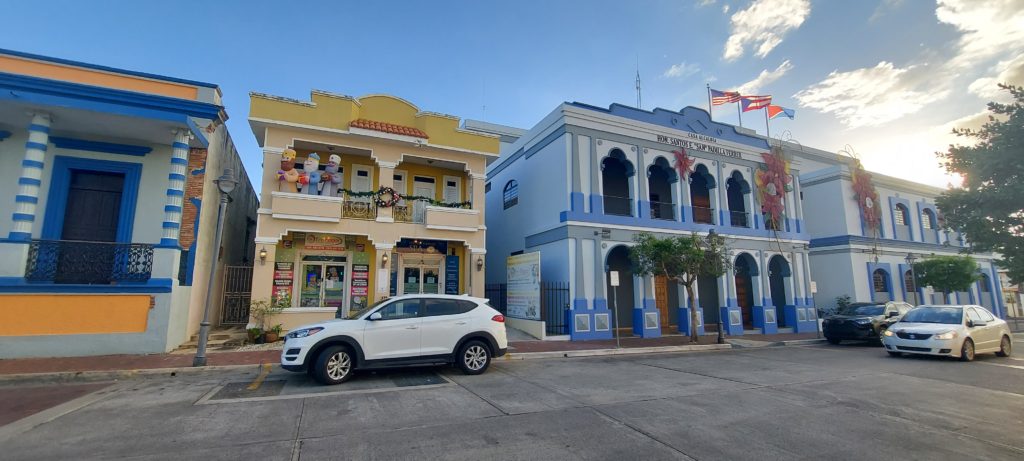
A number of beaches can be reached in 15 minutes or less by car, and we plan to explore as many as we can over the next month. We also plan to do a lot of hiking, find some new boutique distilleries, visit new cities, and experience life off the beaten path.
Buye Beach
Yesterday we spent the afternoon at Playa Buye, a small local beach ten minutes away. It was adorable, and remarkably crowded with Puerto Rican families for a weekday. There were a couple of bars, a waterside concession, and a number of cinderblock cabins. It was lovely until the rain came.
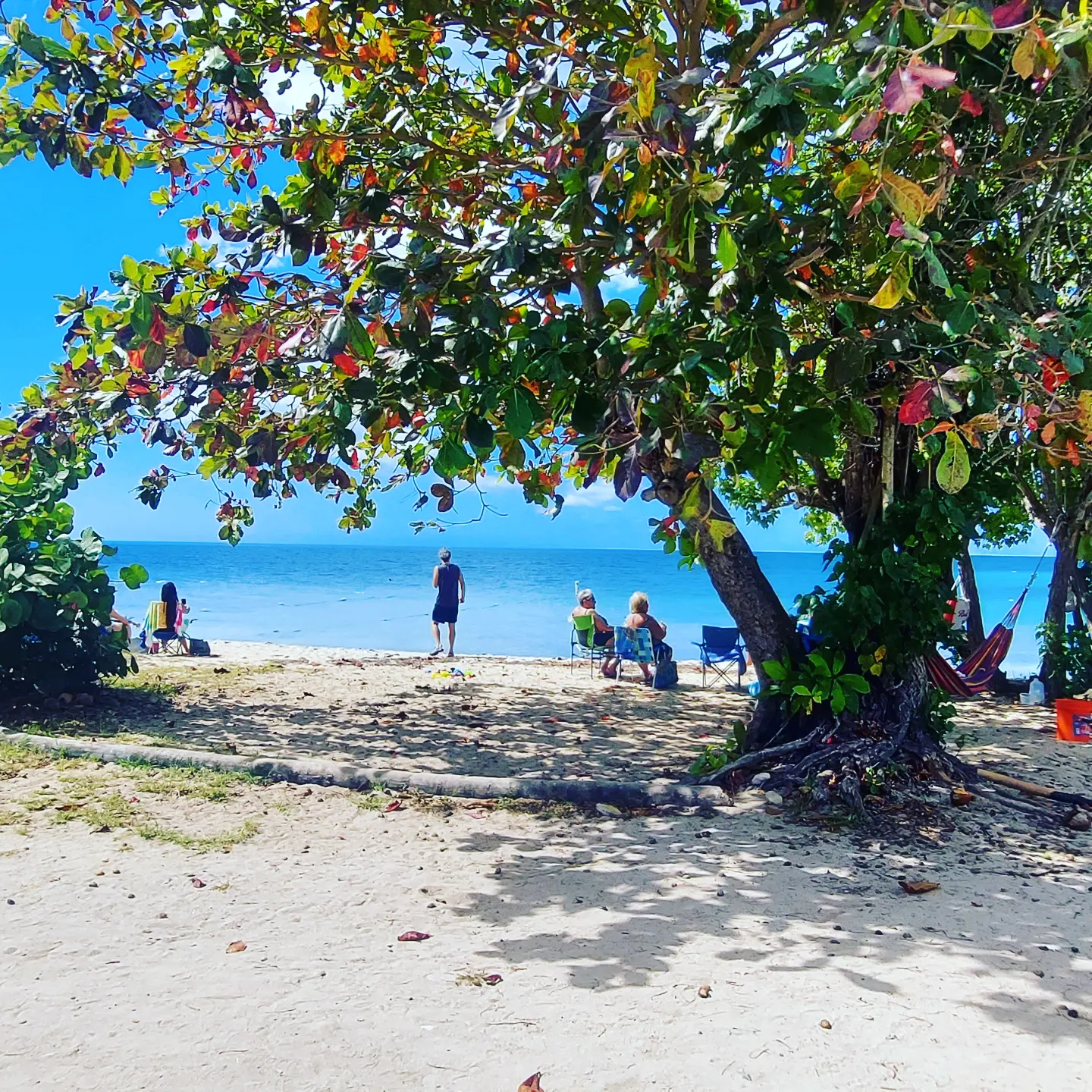
Balneario Boquerón
Today we’re visiting Balneario (Public Beach) Boquerón, and it’s perfection. Three miles of pristine sand and turquoise bay. Hardly any people.
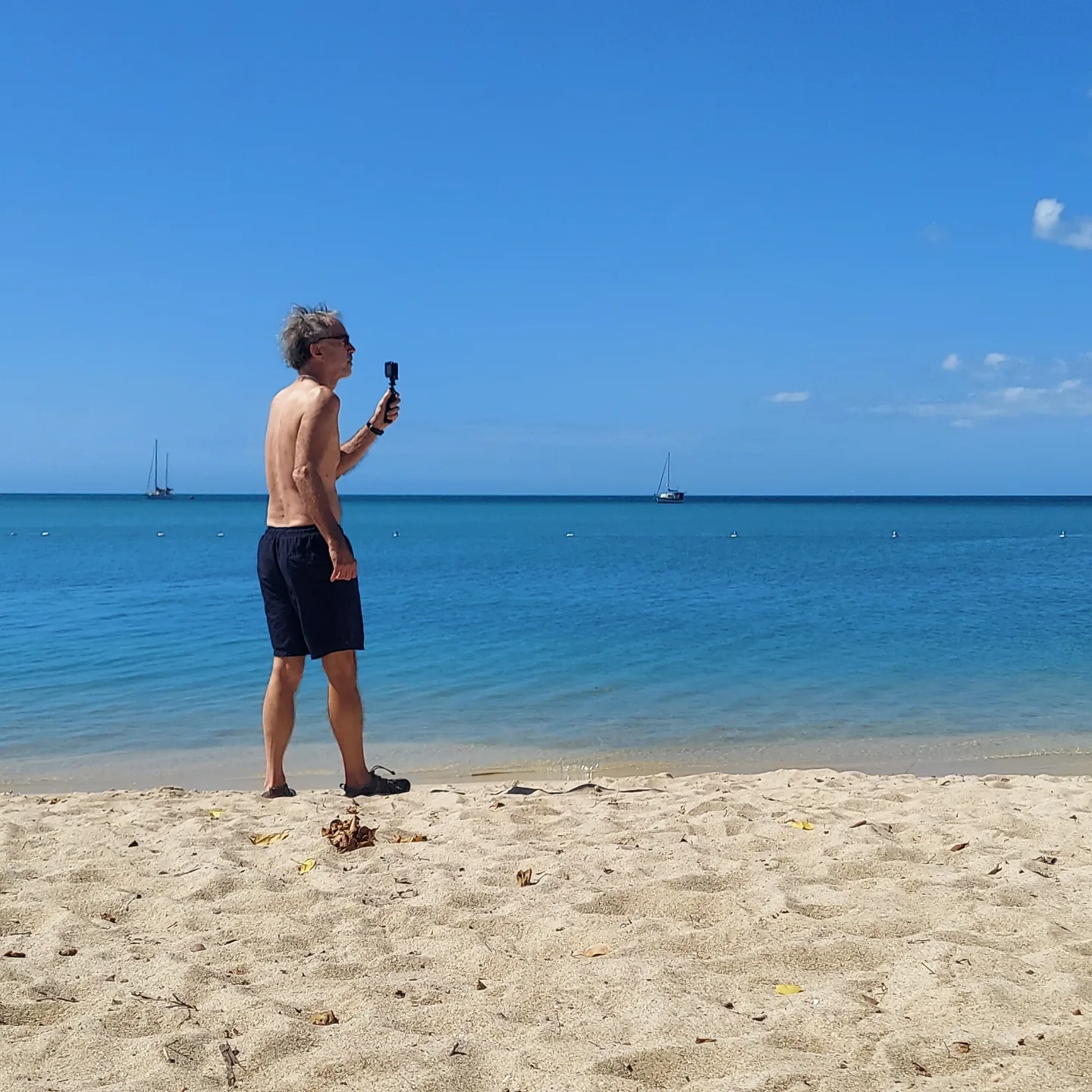
Who knows what tomorrow will bring? Check back to find out!


